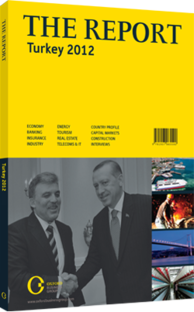Süreyya Ciliv, General Manager, Turkcell: Interview

Interview: Süreyya Ciliv
What has Turkcell done to adapt to the intensified price competition in the Turkish market?
SUREYYA CİLİV: The Turkish market is quite competitive, particularly since the implementation of mobile number portability (MNP) in late 2008 and the introduction of flat-rate offers in early 2009.
Since then, usage minutes have risen significantly, and we have seen average prices fall. We reversed the contraction of voice services revenues, which comprise over 80% of traffic, in the final quarter of 2011, and continued to increase them on a year-on-year ( yo-y) basis through the first quarter of 2012 for the second consecutive quarter. We have focused on improving our post-paid subscriber base, which generates higher revenues, and promoted contract offers that ensure loyalty, thus achieving higher revenues while sustaining our market leadership.
We have seen rapid growth in the number of smartphones (SPs) on our network. In the first quarter of 2012 it increased by 82% y-o-y to 4.3m, currently 12% of the network. We expect this to reach 20% in 2012. Average revenue per user for SPs on our network for data is five times higher than that of regular handset users. Since 2008 our mobile internet revenues have grown by more than 60% per year on average, resulting in a rise in the share of Turkcell’s mobile broadband and service revenues to around 27% in the first quarter of 2012, up from 14% in 2008. Turkcell was recently proved to have the fastest network, with an average of 11.9 Mbps 3G download speed.
How important are branded SPs to retain customer loyalty and boost value-added services?
CILIV: When we introduced our T-branded SP series, we had three main objectives: increasing SP penetration with affordable prices, expanding our contracted subscriber base, and generating incremental mobile internet revenues by triggering usage with an advanced experience through embedded local applications. With the launch of three Turkcell-branded SPs since 2010, the number of SPs on our network rose significantly. This enabled more people to buy SPs and resulted in an increase in contracted subscribers while also boosting our mobile internet business through data and application usage, which increased 13-fold between 2009 and 2011.
We are currently focusing on innovative capabilities and new applications, which include mobile payment, mobile signature, mobile education, telemetry and e-government. In the near future, we expect to see rapid growth taking place in mobile financial services spanning mobile payments to money transfers, fuelled by near-field communication. Location-based services will also continue to thrive and will increasingly include social networking.
Can the preference for prepaid lines and the flexibility to change services be reversed?
CILIV: Since the launch of MNP in November 2008, we have seen quite an increase in port-in/port-out activity in the Turkish market. The introduction of flat-rate offers and unlimited free minute incentives has driven price-sensitive prepaid subscribers to switch between operators to get the best prices.
At the same time, we saw a decline in multiple SIM card usage on our network, from 19% prior to the introduction of MNP to 11% today. However, there has not been a dramatic change in the positions of the operators in terms of subscriber market share.
Once operators stop offering aggressive incentives that reduce per-minute costs for subscribers, we may see less porting activity and more loyalty, so a more rational competitive environment in the sector could reverse this trend. In the Turkish market overall, all players promote switches to post-paid and contracted offers. As of the first quarter of 2012, the post-paid share of our subscriber base is 35%, which is low compared to the EU average of 46%. I believe the ratio will increase in time. However, an environment that is more reasonably competitive must be ensured first.
You have reached the limit of premium articles you can view for free.
Choose from the options below to purchase print or digital editions of our Reports. You can also purchase a website subscription giving you unlimited access to all of our Reports online for 12 months.
If you have already purchased this Report or have a website subscription, please login to continue.

